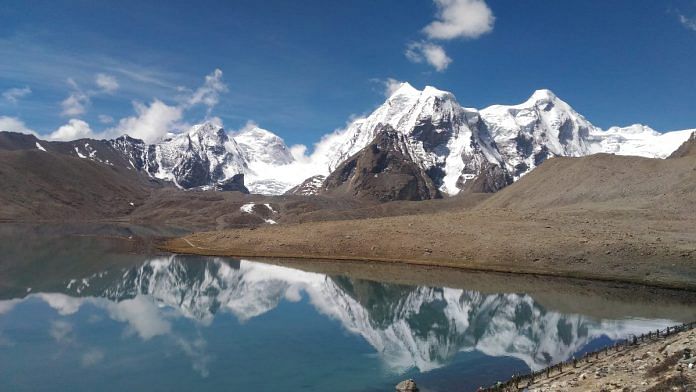New Delhi: Roughly 15 million people across the globe – more than half of them in India, Pakistan, Peru and China – are at risk of a glacial lake outburst, a science journal has reported.
Glaciers are “particularly sensitive to changes in climate” and are highly visible indicators of climate warming, the study says, adding that there has been a substantial decrease in global glacier mass in the last three decades.
As glaciers melt at an alarming rate, they leave huge pools of water in their wake. This water, which fills the depression left by the glacier, is called the glacial lake.
These lakes become increasingly dangerous as more of the glacier melts due to rising temperatures, and can cause “significant loss of life” if the water rises too high or if the surrounding land gives away.
A study published in the journal “Nature Communications” on Tuesday, calls this a glacial lake outburst which can affect people living within 30 miles.
The study says, “Glacial lake outburst floods (GLOFs) represent a major hazard and can result in significant loss of life. Globally, since 1990, the number and size of glacial lakes has grown rapidly along with downstream population, while socio-economic vulnerability has decreased. Nevertheless, contemporary exposure and vulnerability to GLOFs at the global scale has never been quantified.”
It adds that populations in High Mountains Asia (HMA) are the most exposed and on average live closest to glacial lakes with “1 million people living within 10 km of a glacial lake”.
The study puts India in the group of four where populations are most at risk.
It says: “India and Pakistan contain the highest number of exposed people (~3 million and ~2 million people respectively, or one-third of the global total combined) while Iceland contains the least (260 people).”
It further says: “Just four highly populous countries account for >50% of the globally exposed population: India, Pakistan, Peru, and China. As a result, regionally HMA has the highest normalised exposure score (1.000) while the High Arctic and Outlying Countries score the lowest (0.019). India and Pakistan are the highest individually scoring nations (1.000 and 0.701), and Sweden is the lowest (0.001).”
The study reveals that GLOFs can be highly destructive and “can arrive with little prior warning, causing significant damage to property, infrastructure, and agricultural land, and resulting in extensive loss of life”.
Since 2015, the Himalayas have emerged as the primary research focus of GLOFs, the paper says, accounting for 36% of the studies undertaken between 2017 and 2021. “As such, these ‘hotspot’ regions are often cited as having the highest GLOF danger,” it adds.
Also read: Climate change deadlier than cancer, widening gap between haves, have-nots, says new UN study






